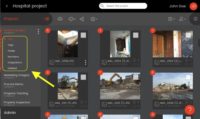The business of delivering software as a service over the Internet and sending heavy processing and collaboration tasks to high-speed computers in remote data centers is finding a home in construction.
For example, a software-as-a-service (SaaS) product called SITEOPS applies the horsepower of cloud computing to its proprietary algorithms that will find the most cost-effective configuration, grading and drainage plan for development. It is a site optimization tool that approaches the issue the way a supercomputer plays chess: It thinks through every possible play and countermove to the end of the game to find the optimal solution.
Sold on a subscription basis, SITEOPS lets users run as many projects through it as they want for a fixed fee. It is finding users among civil engineers, real estate developers and land planners.
“It’s definitely revolutionary software,” says Joe Viscuso, vice president and leader of the urban land commercial sector at Stantec, Edmonton, Alberta, Canada. “I do not know of another product like this, [but] like 3D laser scanning, this will allow us to do many things we couldn’t do before as the technology takes us to new levels,” Viscuso says.
The tool is available at two degrees of resolution: a “quick grade” mode in a design product that is supplied as an SaaS tool but does its processing on the user’s machine, and a much more fully resolved optimization tool called MultiPad that does deeper analysis by checking the project into SITEOPS processors at a data center “in the cloud.”
Cloud Control
The data center is virtual, in the sense that it can tap whatever resources it needs for processing any number of challenging problems. However, it is a very real place, located at Peak 10 Data Center Solutions, Charlotte, N.C., which has racks of managed servers and processors co-located with lots of other servers and processors, all networked to other Peak 10 centers around the country, working for other enterprises around the world. It is the ability to scale up and down on demand that moves beyond what most engineering firms could ever support and maintain in-house.
The deep optimization processing considers hundreds of thousands of options and many layers of needs and constraints. It will propose a solution within hours that optimizes grading, retaining- wall usage, parking layouts, access roadways, stormwater runoff and drainage.
In either case—the quick grade or the deep analysis—the end result is a detailed cost estimate and a preliminary site plan delivered as a DWG, a CAD format compatible with most civil design software used for final design development.
Infrastructure design software vendor Bentley Systems Inc., Exton, Pa., is impressed. It announced on July 7 that it has purchased a minority interest in Charlotte, N.C.-based BLUERIDGE Analytics Inc., SITEOPS developer.

DETWILER
“This is an intriguing investment for us,” says Greg Bentley, CEO. “As we advance information modeling for intelligent infrastructure by way of integrated projects, what I call ‘simulation toward optimization’ is increasingly key. SITE-OPS shows that a well-structured challenge such as site development can truly be made a science.”
The investment amount was not revealed, but Michael W. Detwiler, BLUERIDGE president and CEO, says it represents about a 15% stake in the seven-year-old, privately held company. BLUERIDGE has a network of resellers in 17 states. Concentrations of expert users from 200 subscribing firms can be found at 15 “centers of expertise.” The licenses can be employed by multiple users.
SITEOPS Design, which features auto-drawing tools for rapid layout and preliminary site assessment, costs $2,995 for an annual license. SITEOPS Multi- Pad, the complete cost optimization and grading suite, starts at $9,995 for an annual license for use on sites of up to 15 acres. Regular customers among owner-operators and retailers include the Lowe’s Cos. Inc. and Target.
“Civil engineering will become a more interesting and attractive profession with tools like this,” says Bentley. “This is an empowerment of civil engineering professionals. We will look back on it as the first of many.”
AI Breeding
BLUERIDGE was founded in 2003 to leverage advances in computer processing speed, algorithm science and the potential of cloud computing. Computer engineers have worked for decades to create software to mimic human problem-solving processes. Artificial intelligence,...








Post a comment to this article
Report Abusive Comment